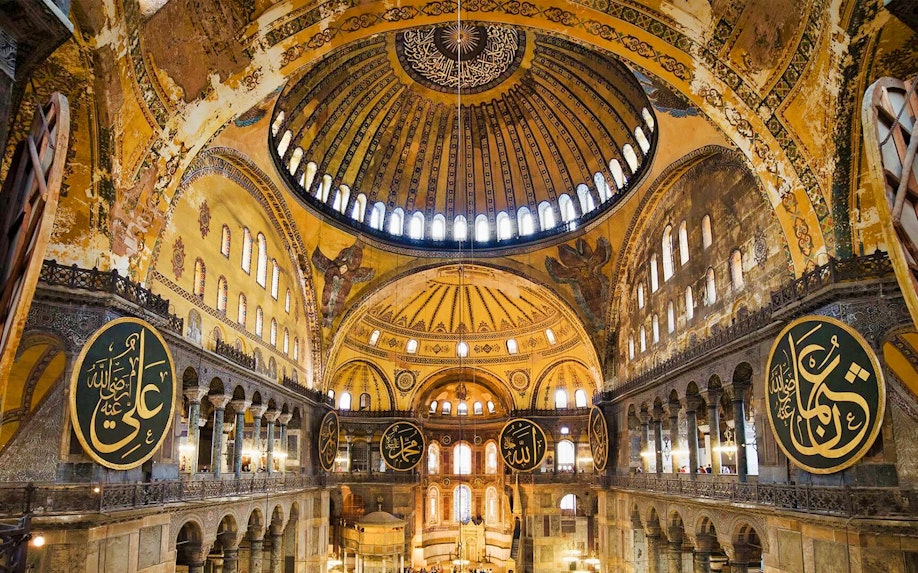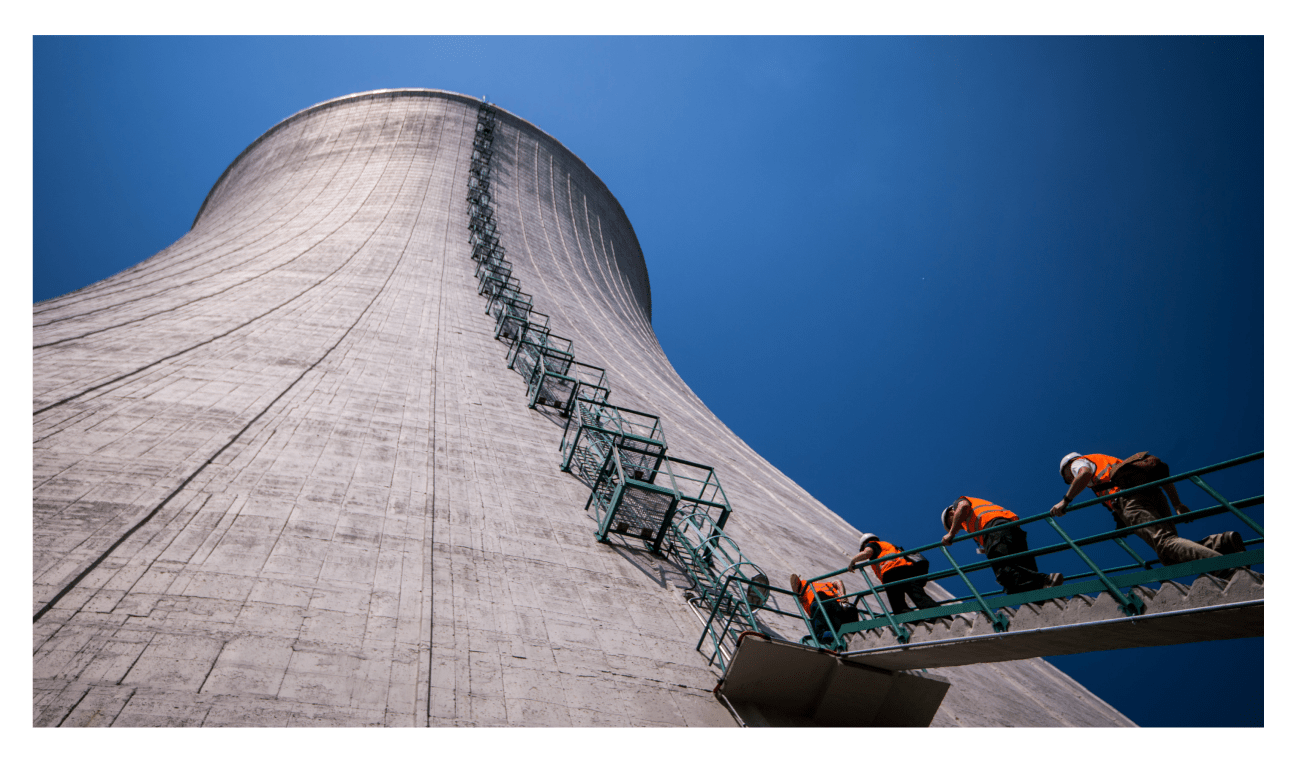The Hagia Sophia: 1600 Years Of History And Structure

Table of Contents
The Byzantine Era: Birth of a Masterpiece (532-1453 AD)
Construction and Architectural Innovations
The Hagia Sophia's construction, commissioned by Emperor Justinian I in 532 AD, was a monumental undertaking reflecting the ambition of the Byzantine Empire. This ambitious construction project, completed in a remarkably short time, showcased groundbreaking architectural innovations for its era. The architects, Anthemius of Tralles and Isidore of Miletus, employed innovative techniques to create a vast, awe-inspiring space.
- Pendentives: The use of pendentives – triangular structures that transition from a square base to a circular dome – was a crucial innovation, allowing for the construction of a massive dome on a square base. This architectural feat was unprecedented in scale.
- Immense Dome: The dome itself, measuring an impressive 107 feet in diameter, was a marvel of Byzantine engineering. Its size and the way it was supported were unparalleled at the time, creating a sense of spaciousness and grandeur.
- Materials and Craftsmanship: The Hagia Sophia's construction utilized high-quality materials, including brick, marble, and exquisite mosaics. The craftsmanship evident in every detail reflects the skill and dedication of the Byzantine artisans.
Religious Significance and Iconography
For nearly 1000 years, the Hagia Sophia served as the principal cathedral of the Eastern Orthodox Church, the religious heart of the Byzantine Empire. Its religious significance extended beyond its architectural grandeur; it was a center of religious and political power.
- Mosaics and Iconography: The interior was adorned with breathtaking mosaics, showcasing intricate religious iconography. These mosaics, depicting biblical figures and scenes, are priceless works of Byzantine art, communicating profound religious symbolism. Many have survived, despite periods of alteration, providing invaluable insight into Byzantine religious beliefs and artistic techniques.
- Center of Power: The Hagia Sophia's central location within Constantinople solidified its importance as not only a religious center but also a focal point of Byzantine political and social life. Imperial ceremonies, religious processions, and significant events took place within its walls, further cementing its significance.
Ottoman Era: Transformation into a Mosque (1453-1931 AD)
Conversion and Modifications
The Ottoman conquest of Constantinople in 1453 marked a pivotal moment in the Hagia Sophia's history. Following the conquest, it was converted into a mosque, reflecting the change in religious dominance. Several modifications were made to reflect its new purpose.
- Addition of Islamic Features: The Hagia Sophia underwent significant changes, with the addition of minarets (slender towers from which the call to prayer is made), a mihrab (a niche indicating the direction of Mecca), and other Islamic architectural features. These additions were carefully integrated into the existing structure, respecting the underlying Byzantine architecture.
- Treatment of Christian Iconography: Much of the original Christian iconography was either removed or covered with plaster or paint to adapt the interior to Islamic sensibilities. While some mosaics survived, many were concealed for centuries.
Continued Significance under Ottoman Rule
Despite the conversion, the Hagia Sophia retained its importance as a significant place of worship and a prominent landmark in the Ottoman Empire.
- Place of Worship: For centuries, it served as the principal mosque of Istanbul, hosting countless prayers and religious observances, showcasing the Hagia Sophia's ability to adapt and serve different religious communities. Its vast interior accommodated large congregations.
- Ottoman Repairs and Renovations: The Ottomans undertook several repairs and renovations to maintain the structure's integrity throughout their reign. These efforts demonstrate their recognition of the Hagia Sophia’s architectural importance.
Modern Era: Museum and Beyond (1931-Present)
Secularization and Museum Status
In 1931, under the leadership of Mustafa Kemal Atatürk, the Hagia Sophia was secularized and transformed into a museum. This decision reflected the secularizing policies of the newly founded Republic of Turkey.
- Museum Conservation: Its conversion to a museum initiated extensive conservation efforts, aiming to preserve the Hagia Sophia’s historical and architectural legacy for future generations. These ongoing efforts are crucial to maintain its structural integrity and preserve its priceless mosaics and other historical elements.
- Major Tourist Attraction: The Hagia Sophia quickly became a major tourist attraction, drawing millions of visitors annually from around the world. Its immense historical and cultural significance continues to captivate visitors, making it one of Istanbul’s most popular destinations.
Recent Controversies and Current Status
Recent legal changes regarding the Hagia Sophia's status have generated significant controversy, shifting its status back to a mosque in 2020 while still allowing visits from tourists. This decision ignited global debate, raising questions about religious freedom, heritage preservation, and the balance between secular and religious identities.
- Ongoing Debates: The ongoing debates highlight the complex interplay between religious, historical, and political considerations surrounding the Hagia Sophia. The future of the Hagia Sophia remains a subject of intense discussion and differing perspectives.
- Symbolism and Significance: Its continued significance in a modern context underscores its enduring power as a symbol capable of representing both religious heritage and secular ideals. Understanding its evolving role necessitates considering its multi-layered history and diverse interpretations.
Conclusion
The Hagia Sophia's 1600-year history is a compelling narrative of architectural innovation, religious transformation, and enduring cultural significance. From its origins as a magnificent Byzantine cathedral to its current status, this iconic structure continues to captivate and inspire. Understanding its rich past allows us to better appreciate its enduring presence as a symbol of both religious and secular heritage. Explore the Hagia Sophia further – delve deeper into its intricate history and unparalleled architecture; you won't be disappointed. Learn more about the Hagia Sophia and its lasting legacy today.

Featured Posts
-
 10 New Nuclear Reactors Approved Boosting Chinas Energy Capacity
Apr 29, 2025
10 New Nuclear Reactors Approved Boosting Chinas Energy Capacity
Apr 29, 2025 -
 Schumer Stays Put No Plans To Pass The Torch Says Senate Majority Leader
Apr 29, 2025
Schumer Stays Put No Plans To Pass The Torch Says Senate Majority Leader
Apr 29, 2025 -
 Jeff Goldblums Jazz Album A Stellar Lineup Including Cynthia Erivo And Ariana Grande
Apr 29, 2025
Jeff Goldblums Jazz Album A Stellar Lineup Including Cynthia Erivo And Ariana Grande
Apr 29, 2025 -
 Top Universities Unite In Private Collective Against Trump Policies
Apr 29, 2025
Top Universities Unite In Private Collective Against Trump Policies
Apr 29, 2025 -
 Ftc Appeals Activision Blizzard Acquisition A Deep Dive
Apr 29, 2025
Ftc Appeals Activision Blizzard Acquisition A Deep Dive
Apr 29, 2025
Latest Posts
-
 Adult Adhd Diagnosis Next Steps And Support
Apr 29, 2025
Adult Adhd Diagnosis Next Steps And Support
Apr 29, 2025 -
 You Think You Have Adult Adhd Now What
Apr 29, 2025
You Think You Have Adult Adhd Now What
Apr 29, 2025 -
 Adhd Og Skole Fhi Om Medisinens Begrensede Effekt
Apr 29, 2025
Adhd Og Skole Fhi Om Medisinens Begrensede Effekt
Apr 29, 2025 -
 Recognizing Adult Adhd 8 Subtle Indicators
Apr 29, 2025
Recognizing Adult Adhd 8 Subtle Indicators
Apr 29, 2025 -
 Skoleprestasjoner Og Adhd Medisin En Fhi Analyse
Apr 29, 2025
Skoleprestasjoner Og Adhd Medisin En Fhi Analyse
Apr 29, 2025
